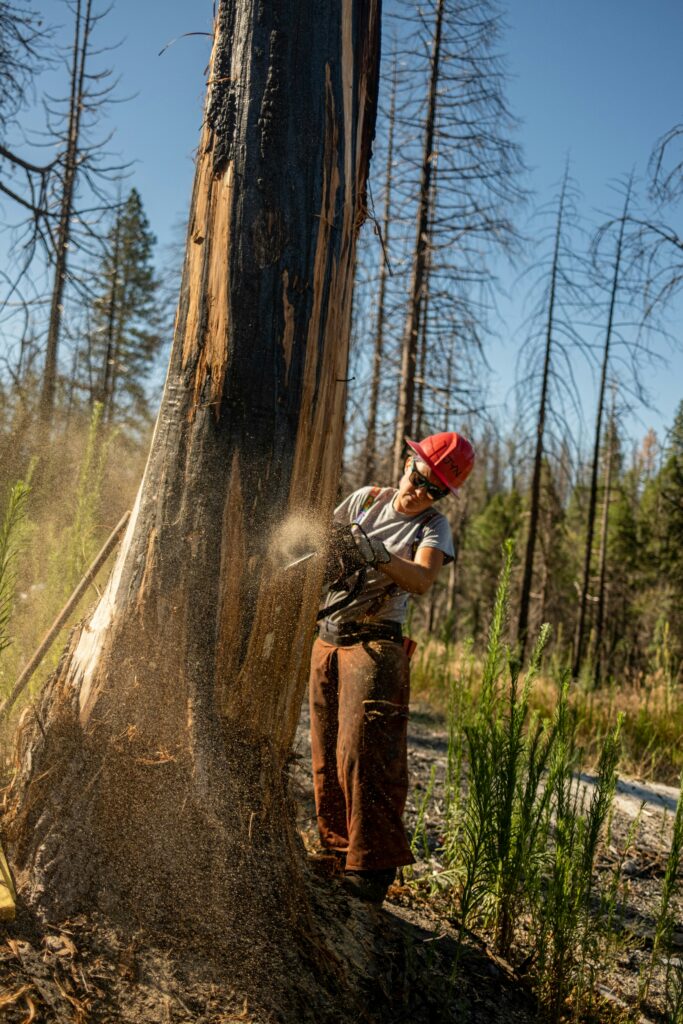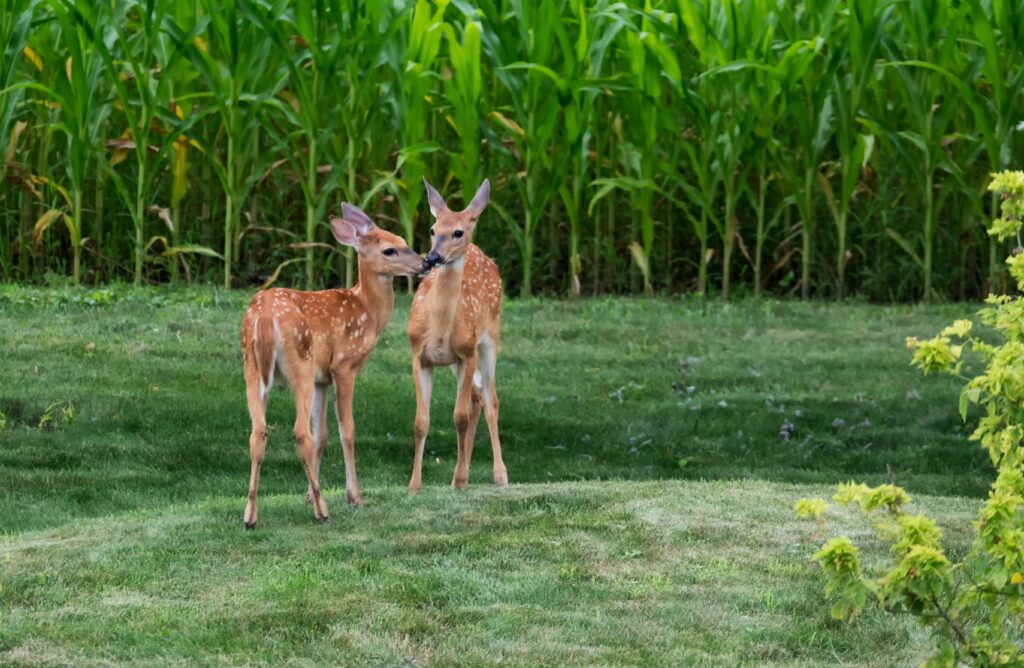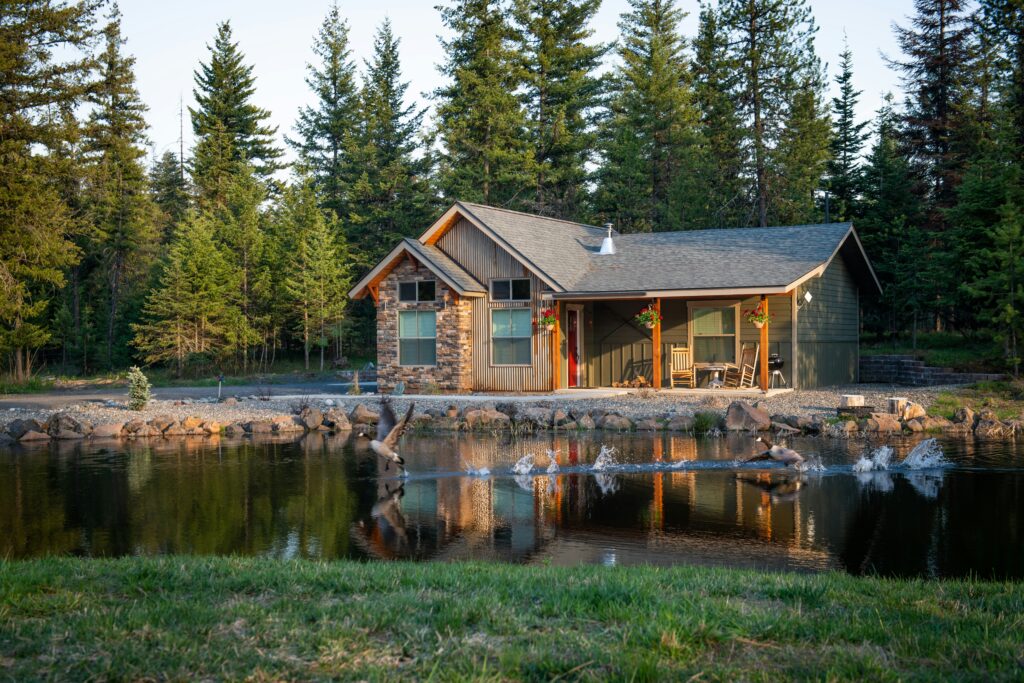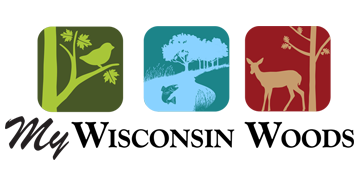
A Gift to Your Land
By Denise Thornton
This holiday season, have you considered adding a present under the tree for your land? If your woodland, wetland or grassland had a wish list, it might well include some of the choices below.

Plant Native Trees and Shrubs
Native plants are adapted to our area and support native food webs. They will draw more wildlife to your land. They are particularly important for native insects, whose numbers are in decline. Start by considering what wildlife you want to encourage, then evaluate your soil, rainfall and temperature conditions. The Wisconsin Wildlife Primer can help you determine which animals live in your region — what they eat, and what they need for nest or den sites. While there are many trees that offer food and/or shelter, (see 10 Trees in Wisconsin That Lure Wildlife ) — shrubs can provide more food and shelter and do it faster (See Top 10 Native Shrubs for Wildlife). A combination of trees and shrubs will provide the most options for wildlife.
If you can’t find native plants at your local nursery, check out this link to the Wisconsin Native Plant Nurseries developed by the Natural Heritage Conservation Program of the Wisconsin DNR.
Thinning Your Woods
More is not always better when it comes to the tree count in your woods. According to the Arbor Day Foundation, trees that are less crowded grow faster, and with greater vigor — they may better fend off insect or diseases.

You can start by removing less desirable species, and trees with deformed trunks. When stems are removed from a woods before they are large enough to sell, or if a market does not exist, the reward may not be immediate, but will benefit your woods in the long run. There are many ways to thin a forest, so making a thoughtful plan, perhaps with the advice of a professional forester, is a good way to begin.
Managed Forest Law
The perfect gift for some woods might be enrollment in Managed Forest Law. To begin with, the landowner hires a certified plan writer who has received training by the DNR to write MFL plans. The plan writer will incorporate the landowner’s interests and meet DNR standards. Applications must be made by June 1, and if accepted, eligible parcels are enrolled the following January.
The biggest potential reservation to MFL for most landowners is the premise that it focuses on timber production,” says Cody Didier, DNR statewide compliance specialist for MFL. “I know timber production is not the first priority for most landowners, but they are likely to encounter a timber harvest at some time during the life of their MFL enrollment. A timber harvest prescribed in a MFL plan is based on sound forestry principles, and generally speaking, a good plan for timber harvesting can also be good for maintaining a healthy forest, for creating wildlife habitat, and be good for hunting.”
Didier recommends anyone interested in MFL learn more by subscribing to Wisconsin DNR Forestry News. My Wisconsin Woods plans to publish an article more fully exploring MFL in the August 2025 edition.

Decrease Invasive Plants
All of Wisconsin’s habitats are threatened by invasive species that outcompete valuable native vegetation, and they reduce the vital biodiversity of your woodland.
Check this link from the Wisconsin First Detector Network of common Wisconsin invasives, their impacts, and how to identify them. An article in the JULY 27, 2022 My Wisconsin Woods included these common methods for ridding your woods of woody invasives.
- Foliar treatment – a light mist of herbicide on leaves
- Basal bark treatment – directly spraying the bark or stem, and especially useful for buckthorn. Include a bark oil that helps the herbicide penetrate.
- Cut and swipe works for smaller bushes and trees — In fall, cut stems and swipe immediately with herbicide. It’s important to do this in fall because in spring the majority of a plant’s flow is up from its roots and will push herbicide out. In fall the shrub has spent all summer making food and is storing it in the roots, so the movement of nutrients and water is downward.
For a comprehensive description of control techniques for other invasive plants, check this WI DNR website.
Create Edge Habitats

Some animals prefer to remain in large wooded or large prairie areas, but especially if your land is more fragmented, maintaining a mix of open areas and dense woodlands creates edges which can benefit a wide variety of animal life. Many species nest in one habitat and feed in another. A grassland next to a wetland meets the year-round need for pheasants. Along woodland edges, song sparrows, brown thrashers, gray catbirds, flickers, indigo buntings, bluebirds, cardinals, and red-tailed hawks are very active.
Identify any edges that exist on your land and consider how to improve them as habitat. For wildlife habitat, a wider, blended edge is best, creating a gradual transition between cover types. Wildlife-friendly shrubs you can add include dogwood, highbush cranberry, nannyberry, ninebark, serviceberry, hazelnut, wild plum, and crab apples, as they provide a variety of berries, seeds, fruit, browse, and insects.
From the wooded side, you can blend the habitats by girdling selected trees within 30 feet of the border. Girdling will create a snag and open the canopy so shrubs and ground cover can start up beneath. The snag itself can provide nesting cavities, insects for food, and perches for hawks and owls. For the same reason, leave some fallen logs and dead trees throughout your wooded areas.
Create a Wildlife Corridor

A common threat to wildlife populations today is habitat fragmentation. A wildlife corridor that links similar habitat segments can support biodiversity by increasing food sources and provide cover that will decrease the chance of predation of animals using it. Corridors can connect grasslands, wetlands, woods and even old fields, with the smaller patches serving as steppingstones between larger segments. And especially as the climate changes, habitat linkages might help species to naturally migrate to more hospitable ranges.
The Indiana Division of Fish and Wildlife suggests that corridors need to be from 50 feet to 200 feet wide. Corridors less than 50 feet wide may encourage nesting activity but not provide enough cover to protect the nest from predators.
A 50-foot-wide border along a crop field between two wooded tracts can be planted with a mix of warm-season grasses such as big bluestem and switchgrass. Legumes combined with shrubs can turn an edge habitat into a corridor. Scattered brush or rock piles provide cover for reptiles, songbirds, quail and small mammals.
A buffer planted with trees and shrubs along a ditch, stream, or pond can stabilize the bank and provide cover for wildlife attracted to water. Placing the buffer on the south and west side will also shade the water and help the native aquatic life. Livestock should be kept out of riparian corridors to minimize erosion, and maintain better water quality. In fact, in any wildlife corridor, consider the toll grazing can take on wildlife habitat.

Create Water Sources
Maintaining or creating small ponds and wetlands will provide drinking water and breeding habitats for wildlife. The WI DNR offers information on ponds and wildlife habitat structures at its site on Waterway Protection. If you are upgrading an existing pond by removing weeds, invasives, or nuisance plant species by hand, you will not need a permit, but vegetation control using herbicides does require a permit. To determine if a local permit or a federal permit is required for your project, contact your city or county zoning authority or the U.S. Army Corps of Engineers – St. Paul District Office.
Do any of these suggested presents for your land sound appealing? If so, they could make for a joyous new growing year and will be a gift that goes on giving. Happy holidays!
